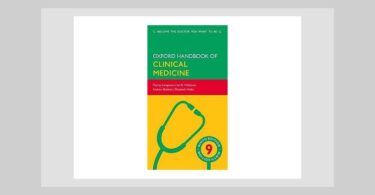Title: Exact, Complete, Depth, the Eight Box Method of Case Taking
Author Dr. Rajan Sankaran
Published By Homeopathic Medical Publicher, Mumbai, India
ISBN 987-93-80355-67-2
Hard Cover, 184 Pages
Reviewer – Vatsala Sperling
This book shows the culmination of Dr Rajan Sankaran’s and with him, our journey as an evolution from the old-style classical homeopathy to the sensation method, to synergy and finally to eight-box method. In each step along the way, Dr. Sankaran has enabled us to grow and mature with him, just as a seasoned teacher would do.
It is well known that a case can be seen by different practitioners from different perspectives, and each practitioner comes to a different remedy. For explaining this common phenomenon, Dr. Sankaran uses the parable of eight blind men groping at an elephant and declaring his finding to be the full elephant.
This parable implies that one’s subjective experience can be true, but such an experience is inherently limited by its failure to account for the other truths or a totality of truth. To address this situation, Dr. Sankaran has written a book, ‘From Similia to Synergy, the Evolution of Homeopathy’.
In this book, he successfully tied all the loose ends together and presented a point of view that for a successful solving of a case, the triangle of symptoms, system, and genius form a base. Each angle constitutes an indispensable part of the triangle.
The sensation is not a separate and independent method of practice, but it is an interdependent and flexible tool to be used corroboratively and synergistically with the traditional methods and analysis based on materia medica and repertory, so that an expansive view of the case could be attained along with a greater understanding of what is to be cured and what is the curative range of a remedy.
Synergy is the center point of this triangle made up of three interdependent angles. He also wrote another book, ‘The Synergy in Homeopathy, an Integrated Approach to Case Taking and Analysis’ explaining the concept of synergy. But even after such an elaborate explanation in these books (as well as in his classes, seminars, webinars, and lectures), some students continued to fumble and run into difficulties while trying to apply the concept of synergy in their practice.
An untiring teacher and author that Dr. Sankaran happens to be, he wrote yet another book in order to make matters simpler, and the concept of synergy more practical and reproducible, ‘Exact, Complete, Depth, The Eight-Box Method of Case Analysis.’
This approach itself is genius and it addresses all the varied lookout points where we can possibly stand and look at the case. This approach is based on the simple idea of “organization” and it takes the haphazardness out of the equation.
How to organize? Just the way we do in our homes when we want to organize a closet. We need boxes to sort things into categories. This is as simple an analogy as we can get. The patient comes to us as an individual full of surprises. We begin case taking.
The patient gives us a lot of information from various aspects of his life, disease symptoms, personality, sensation, and experiences. We begin to sort these into 8 distinct boxes and in the end, examine each box (each aspect of the case) in a precise manner. Locating the clearest aspect enables us to locate the remedy, but inherently, the exercise involves a detailed examination of each box and not neglecting any.
Looking into each one of the 8 boxes allows for a seamless search of the pattern that connects one aspect to the other aspect of the case. We can go deeper in each aspect to find out the thread that runs through all aspects. This method allows for choosing an approach that suits the case, and we can use any tool (or any box) that serves the best, be it repertory, kingdom, sensation, genius, pattern, or pathology.
For most practitioners, this 8 Box method reduces errors, and is easiest to grasp and reproduces as it marries the old with the new, and does not ask us to side one or favor one over the other.
So, what are the 8 boxes?
- Pathology / organs affected
- Local symptoms, chief complaint / location, sensation, modality, concomitants, peculiar, queer, strange and rare symptoms
- Physical generals, modalities, exciting factors
- Mental symptoms, observations, effects of the chief complaint
- Dreams, delusions, fears, situations
- Kingdom, sub-kingdom, and source
- Miasm, pace
- Pattern, genius
Once the in-coming information is parked into these distinct boxes, we can then choose the box that has the strongest clue to a remedy. This 8-box tool enables us to be exact as we receive and organize information, and then go into the depth of the case and solve it with a satisfying completeness.
Dr. Sankaran also elaborates further the purpose of each of the 8 boxes and thru this exercise, how to locate the center of the case to which all the 8 boxes are connected. When we find this connection running through all the boxes, we have reached a sufficient depth, Dr. Sankaran says.
Not surprisingly, there are few more boxes to consider: mother’s history during pregnancy (in case of young children), details of previous treatments, persons who have the biggest impact on the patient, history of the patient, and the level at which the patient experiences his life. Examining these levels is particularly important for choosing potency.
LEVEL 1: NAME (6C, LM1, LM2)
LEVEL2: FACTS, MODALITIES (30C, LM3, LM4)
LEVEL 3: EMOTIONS (200C, LM5, LM6)
LEVEL 4: DELUSIONS (1M, LM7, LM8)
LEVEL 5: SENSATION (10M, LM9, LM10)
LEVEL 6: ENERGY (50M, LM11, LM12)
LEVEL 7: BLANKNESS, BEYOND ENERGY (CM)
Confirmation is the final step in the 8-box method when we match the essence of the patient with the essence of the remedy and at this point, we must reconcile with the fact that all the symptoms of the remedy will not be present in the patient.
Every remedy, according to the kingdom, has an essential quality and that quality must be present in the patient. For example, the essential quality of Sulphur is “inquisitiveness, theorizing and a feeling I am better than you (as an assertion of his identity, and not as a way of comparison in animal kingdom).”
Any patient receiving Sulphur must show this core quality of Sulphur in all aspects of his life (and all 8 boxes of his case). The author has given nine abbreviated cases as examples of how the 8-box method works in practice.
Even with all the sorting and organizing into 8 (+ 5 more) boxes, going into depth, and finding a connecting thread that runs through all boxes, and then finding a remedy that matches the core quality of the patient, we can still possibly commit errors:
- Using the 8-box method too rigidly (it must be used in a flexible manner)
- Using the 8-box method as a substitute for observation, and eliciting peculiarities in the patient
- Inability to think outside the box
- Getting trapped in our own prejudice
- Random repertorization by picking symptoms without evaluating their importance in the case
- Looking at symptoms without the context of materia medica
- Incompleteness of repertories (Oops! Our tools need updating and improvement too)
- Mis-locating the clearest box
- Mechanical classification
- Lack of fineness
- Confusing situation and individual symptoms
With all these possible venues for errors identified and listed, Dr. Sankaran very wisely adds that one art that we could work on cultivating is the art of thinking outside the box. The 8-box method makes our work easy and integrates every aspect of the case, but the real fun of homeopathy is learning from everyone and then allowing oneself to be open to all possibilities and think unconventionally, think outside the box.
This is the beauty of homeopathy as a science and an art – there is no place for a rigid, routine. Every new case is a new adventure, and it is up to us to be alert to how the case will unravel for us and where it will take us.
In the end, Dr. Sankaran brings the analogy of the elephant and the 8-boxes into a playful conclusion:
| E | Exciting factor | E | Exactness
|
| L | Local symptoms | L | Looking into all aspects (complete)
|
| E | Experience / sensation | E | Evaluate (which is more central)
|
| P | Physical generals | P | Peculiarity (individualization)
|
| H | Hallucination / delusion | H | Holistic (see the pattern in the whole)
|
| A | Ailment / pathology | A | Anchor (starting point, yet flexible)
|
| N | Nature / mental symptoms | N | Near and far, zoom in and zoom out
|
| T | Totality, pattern, genius, miasm | T | The confirmation – matching the remedy and the patient |
This is a fair and satisfying conclusion to our studies with Dr. Rajan Sankaran for the past 40 years. And the good news is that he has adeptly brought us to a full circle. He has reaffirmed the place, the importance, and the necessity of staying true to the fundamental philosophy of homeopathy, using time-tested basic tools like repertory and materia medica, and then emphasized that we must learn from every source, integrate the old and the new seamlessly, and for that he has given us this new present of the 8-box method. Thank you, Dr. Sankaran.






